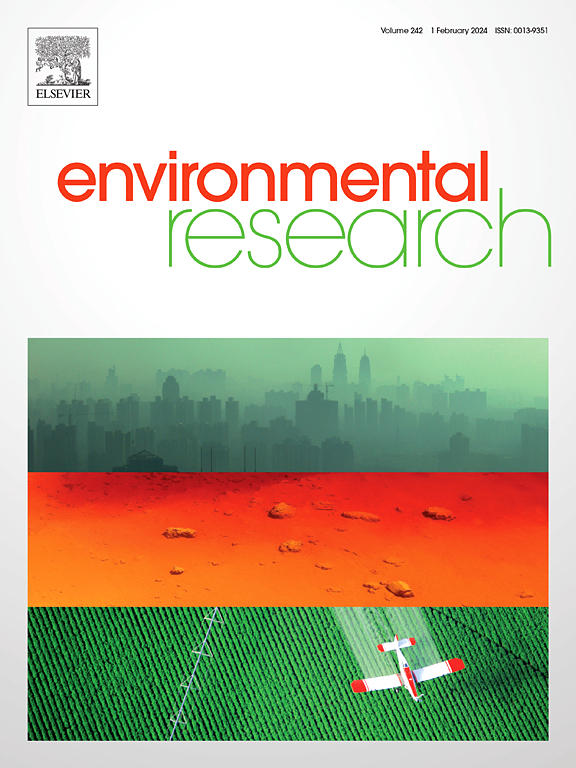Combined long-term aerated storage and photo-Fenton process for winery wastewater treatment: operational conditions optimization
IF 7.7
2区 环境科学与生态学
Q1 ENVIRONMENTAL SCIENCES
引用次数: 0
Abstract
Winery wastewater (WW) is an environmental problem in wine producing countries. In this work, a long-term aerated storage (LTAS) biological reactor was commissioned and optimal operational conditions were assessed. Regarding air supply, data shows that LTAS operational conditions (air flow = 110 dm3/h, aeration period 15 h/day, time = 15 days, V = 5 L) allowed to achieve a high microbial growth with a chemical oxygen demand (COD) reduction of 98.8 % and a dissolved organic carbon (DOC) removal of 88.7 % and low cost (0.124 €/g.DOC). The remaining non-biodegradable organic fraction was afterwards submitted to a UV-C photocatalytic reactor. Optimal photo-Fenton conditions obtained were pH = 3.0, [H2O2] = 97 mM, [Fe2+] = 2.5 mM and reaction time = 240 min. This allowed a DOC reduction of 98.2 % with an electric energy per mass (EEM) = 0.410 kWh/g.DOC. Combined LTAS/photo-Fenton processes have a synergistic effect, achieving 99.0 and 98.2 % of removal of COD and DOC, respectively, and allowing the discharge of treated WW in conformity with the Portuguese Legislation (Decree-law n. 236/98) with a low cost (0.158 €/g.DOC). The LTAS/photo-Fenton system can be an interesting solution to manage WW treatment.

长期曝气储存与光fenton联合处理酒厂废水:操作条件优化。
酒庄废水是葡萄酒生产国家面临的一个环境问题。本文对一个长期曝气储存(LTAS)生物反应器进行了调试,并对其最佳运行条件进行了评估。在送风方面,数据显示LTAS运行条件(空气流量= 110 dm3/h,曝气周期15 h/天,时间= 15天,V = 5 L)可以实现微生物的高生长,化学需氧量(COD)降低98.8%,溶解有机碳(DOC)去除率为88.7%,成本低(0.124欧元/g.DOC)。剩余的不可生物降解的有机部分随后提交到UV-C光催化反应器。获得的最佳光- fenton条件为pH = 3.0, [H2O2] = 97 mM, [Fe2+] = 2.5 mM,反应时间= 240 min。这使得DOC减少98.2%,每质量电能(EEM) = 0.410 kWh/g.DOC。LTAS/光fenton联合工艺具有协同效应,COD和DOC去除率分别达到99.0%和98.2%,处理后的WW排放符合葡萄牙立法(法令236/98),成本低(0.158€/g.DOC)。LTAS/光fenton系统可以成为管理WW处理的一个有趣的解决方案。
本文章由计算机程序翻译,如有差异,请以英文原文为准。
求助全文
约1分钟内获得全文
求助全文
来源期刊

Environmental Research
环境科学-公共卫生、环境卫生与职业卫生
CiteScore
12.60
自引率
8.40%
发文量
2480
审稿时长
4.7 months
期刊介绍:
The Environmental Research journal presents a broad range of interdisciplinary research, focused on addressing worldwide environmental concerns and featuring innovative findings. Our publication strives to explore relevant anthropogenic issues across various environmental sectors, showcasing practical applications in real-life settings.
 求助内容:
求助内容: 应助结果提醒方式:
应助结果提醒方式:


